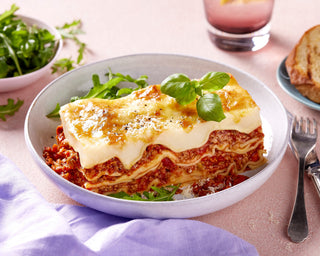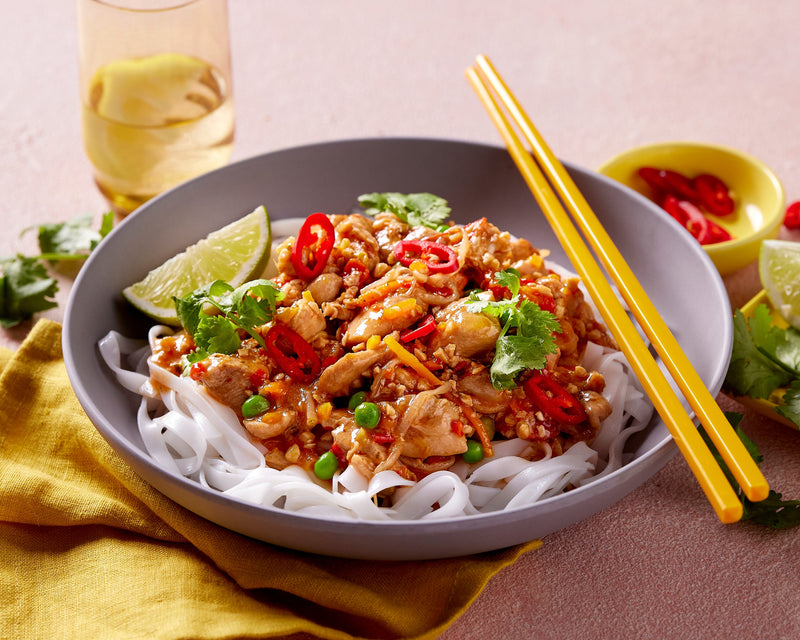Following a well-planned vegetarian diet can be healthy and rewarding; however, it is important to ensure your meat-free meals are balanced and are meeting all your nutrient needs. Vegetarian diets can be categorised into four main groups: Lacto-ovo vegetarians – Include dairy foods such as milk, and eggs, but avoid red meat, poultry and seafood. Lacto-vegetarians – Include dairy foods, but avoid red meat, poultry, seafood and eggs. Pescetarians – Include seafood, but avoid red meat and poultry (eggs and dairy foods may or may not be eaten). Vegans – Include only plant foods.
| Red meat | Poultry | Seafood | Dairy foods | Eggs | Plant foods | |
| Lacto-ovo vegetarians |
✓ |
✓ | ✓ | |||
| Lacto-vegetarians |
✓ |
✓ |
||||
| Pescetarians |
✓ |
May or may not |
May or may not |
✓ |
||
|
Vegans |
✓ |
Protein
Protein is more than just a supplement for athletes and gym junkies; it’s an essential nutrient needed for the growth and repair of our body’s cells. Made from smaller building blocks called amino acids, a complete protein contains all of the nine amino acids needed for good health. While most Australians get plenty of protein through their diet, vegetarians can sometimes fall short as most plant sources do not contain complete proteins. Consuming a variety of foods throughout the day should provide you with a good dose of complete protein. Here are some good sources to look for:- Soy products, including milks, tofu and tempeh. (One of the only complete plant proteins)
- Legumes such as beans and lentils
- Nuts and seeds
- Wholegrain cereals
- Eggs and dairy products like milk, yoghurt and cheese
Iron
Needed by our bodies for processes such as oxygen transfer, iron generally conjures images of a big, juicy steak. This is no surprise, really, as red meat is a good source of haem iron, a form that is more efficiently absorbed in our bodies than the non-haem iron found in plant foods. That being said, vegetarian diets are often high in iron, as they tend to include plant foods like green leafy vegetables, beans, lentils and fortified cereals. The key is to optimise non-haem iron’s absorption, which can be achieved by pairing foods with a source of Vitamin C, such as a glass of orange juice with your morning cereal, or some dried apricots in your mid-morning trail mix. You may also wish to avoid drinking tea or coffee with your meals, as their naturally occurring tannins may interfere with iron’s absorption. Try our Minestrone and Quinoa Soup, containing a plant source of iron from quinoa.Vitamin B12
Not only is Vitamin B12 important for the production of red blood cells, it also plays a role in nerve and brain health. However, as it is found only in animal products, those who don’t consume eggs and dairy foods like milk, cheese and yoghurt often find it difficult to consume enough. Many vegetarian foods like soy drinks, cereals and meatless sausages and burgers are fortified with Vitamin B12, as is good old Vegemite! It’s particularly important for pregnant and breastfeeding mothers to be vigilant in consuming Vitamin B12 containing foods, to reduce the risk of deficiency in their babies. Try our Vegetable Lasagne, with a delicious low-fat ricotta cheese sauce.Calcium
We all know that calcium is essential for strong bones and teeth, but did you know it also plays a role in regulating heart, nerve and muscle functioning, as well as blood clotting? Although it’s such an essential mineral, many people don’t consume enough. Luckily, dairy foods like milk, yoghurt and cheese contain plenty of calcium, as do fortified soy and nut drinks. For those who don’t consume dairy foods, ensure you’re meeting your requirements by choosing plant foods rich in calcium, like fortified cereals, tofu, legumes, nuts and seeds, as well as leafy dark green vegetables – particularly Asian greens like Bok choy, which appear to be better absorbed.Zinc
Zinc is a mineral that performs multiple functions in the body and plays an important role in immune function. Although plenty of plant foods contain zinc, their absorption in the body isn’t as efficient as from animal foods like red meat and seafood. Their lower bioavailability is mainly due to phytic acid, found naturally in legumes, cereals, nuts and seeds. Phytic acid binds to zinc and minimises its absorption in the body, but certain food preparation techniques can reduce this process. Breads like sourdough, made through yeast fermentation, as well as beans and legumes that have been soaked prior to eating, are great simple choices to improve zinc absorption.









